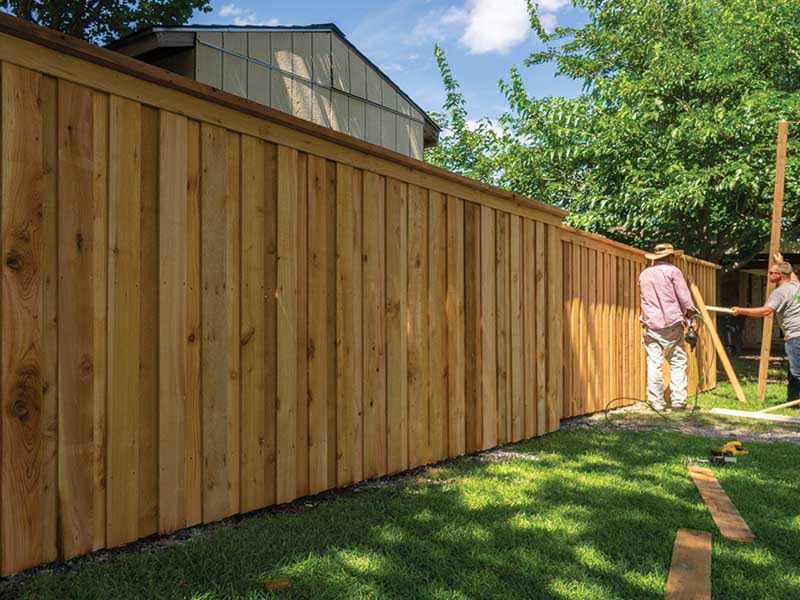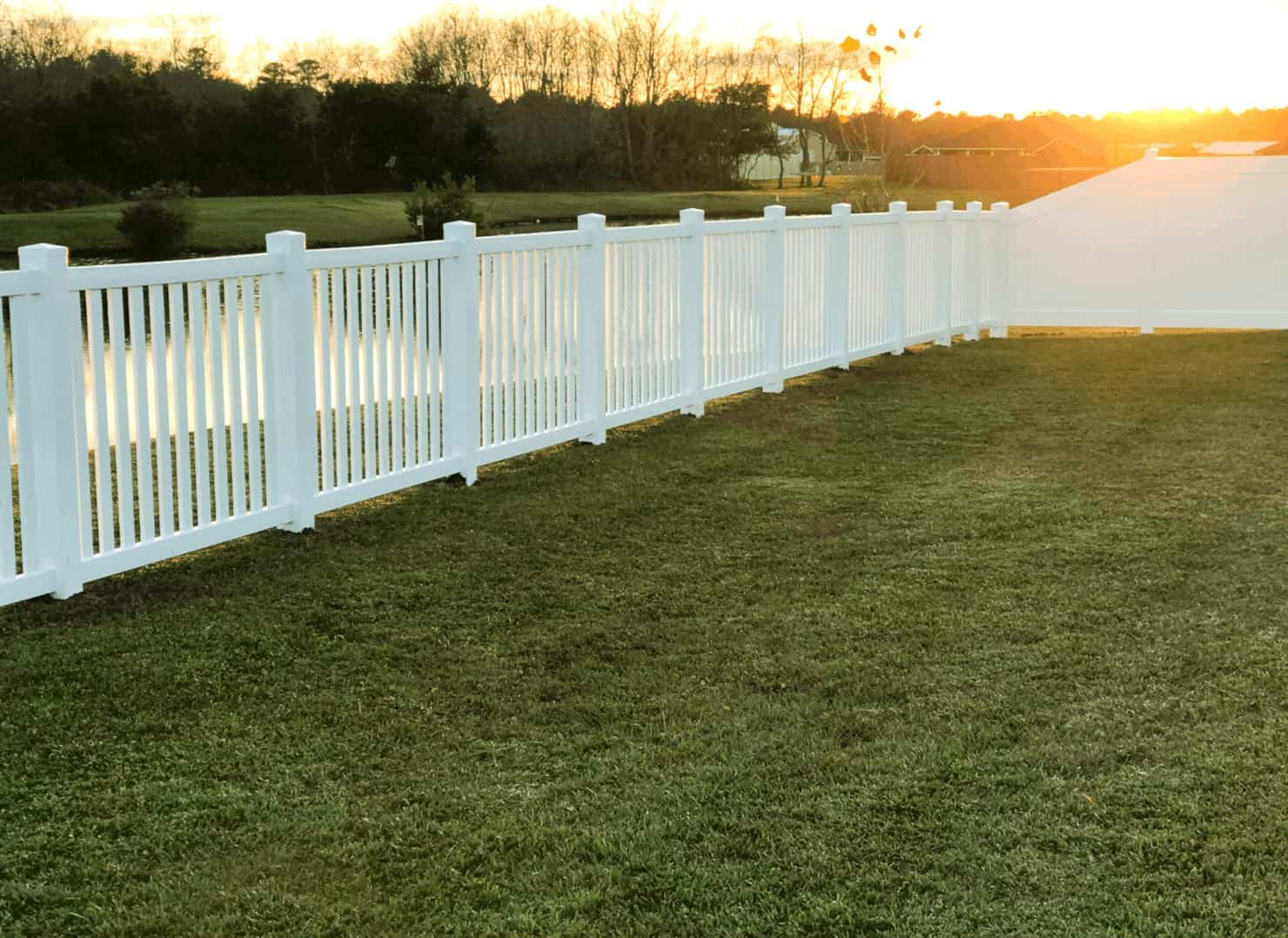Custom Designs You Can Expect from an Experienced Deck Builder
Wiki Article
How to Determine Common Problems That Call For Immediate Fence Fixing
When it pertains to maintaining your fence, it is crucial to identify concerns before they end up being larger problems. Consistently looking for indications of deteriorating wood, leaning panels, or corrosion can conserve you money and time in the long run. You may not understand just how weather and insects can jeopardize your fencing's honesty. Let's explore the typical indicators that indicate your fence needs prompt focus, so you can keep your residential property protected and looking its ideal.Indications of Rotting Wood in Wooden Fences
Have you seen your wooden fence looking a little bit shabby? If so, it might be time to check for indicators of decomposing timber. Take a look at the base of the articles and panels for soft areas. If you continue the wood and it feels spongy or crumbles, that's a clear indication of rot. Next off, seek staining or dark areas on the wood-- these typically signal wetness damage. Take note of any peeling off paint or surface, as this can expose the wood to more degeneration. Furthermore, a pungent, musty scent can suggest fungal growth. Do not neglect to check connections and joints; if they're loose or crumbling, the timber below is likely endangered. By capturing these indications early, you can avoid more extensive damage and maintain your fencing standing solid. Regular maintenance is vital to expanding the life of your wooden fence.Leaning or Tilting Fence Panels
If you have actually observed your fence panels leaning or tilting, it's important to comprehend what triggered it. This problem might suggest underlying structural damage that requires your interest. Let's explore the usual causes and the fixing options readily available to get your fencing back in shape.
Root Causes Of Leaning Panels
It's commonly a sign of underlying concerns that require resolving when you observe your fencing panels leaning or turning. One common cause is poor drain; too much water can erode the soil around the fencing blog posts, weakening their support. Another wrongdoer might be solid winds or storms that push versus the panels, especially if they're not appropriately anchored. Furthermore, the all-natural settling of soil with time can cause blog posts to shift, leading to a tilt. Pests, like termites, can endanger the stability of wood panels, triggering them to lean too. Bad setup techniques may result in panels not being securely set, leaving them at risk to leaning under pressure. Address these issues immediately to preserve your fence's integrity.
Indications of Structural Damage
Noticing tilting or leaning fencing panels can be startling, as these concerns often indicate structural damages that requires prompt focus. When your fence starts to lean, it may signal that the blog posts are shifting or that the soil around them has deteriorated. Pay close focus to voids between panels or articles, as these can additionally suggest instability. deck builder. Furthermore, look for cracks or splintering in the wood, which can weaken the general structure. It could jeopardize the honesty of the fence if you see corrosion or deterioration on steel elements. Remember, disregarding these signs can lead to a lot more serious damages down the line, so it's important to analyze the circumstance promptly and do something about it before it intensifiesRepair Options Available

Corrosion and Rust in Metal Fences
If you possess a metal fence, you could notice corrosion and corrosion creeping in in time, especially if it's subjected to moisture. These issues not only impact the appearance of your fence yet can also jeopardize its architectural integrity. To determine corrosion, look for reddish-brown areas or spots, which show the metal is oxidizing. Rust can spread out quickly if left unattended, leading and weakening the fencing to pricey repairs.To tackle corrosion and deterioration, you ought to clean the influenced areas with a cable brush and use a rust-inhibiting primer. Once the guide dries, take into consideration painting the fence with a weather-resistant paint to secure it additionally. Routine upkeep, such as evaluating for signs of fence repair corrosion and retouching paint as needed, will certainly aid extend your fencing's lifespan. Attending to these problems quickly assures your metal fence continues to be solid and visually appealing for years to come.Cracks and Splits in Vinyl Fencing

Causes of Plastic Damages
Plastic fencing is popular for its sturdiness, yet it can still struggle with splits and divides as a result of numerous variables. One significant reason is severe temperature level variations. It can weaken the product over time when plastic increases in the warmth and agreements in the chilly. Furthermore, direct exposure to rough sunshine can bring about UV deterioration, making the vinyl fragile. Physical influences, like unintended crashes or heavy branches, can also develop splits. Poor setup or using low-grade products can intensify these issues. Furthermore, age contributes; older plastic fence is much more susceptible to damage. Regular examinations can help you determine these factors prior to they lead to substantial issues. Take aggressive steps to guarantee your fence remains undamaged and solid.Repairing Cracks Efficiently
Fractures and splits in your vinyl secure fencing can be worrying, resolving them immediately can stop additional damage and maintain the fencing's look. Initially, examine the size of the split. For tiny splits, a vinyl repair service kit typically includes adhesive that can bond the edges, giving a seamless solution. Tidy the location extensively before applying the sticky, guaranteeing it adheres correctly. For bigger divides, you could need to make use of a plastic spot. Cut the spot to size, use adhesive around the edges, and press it securely onto the split. Permit it to treat based on the maker's instructions. Normal upkeep and fast fixings can extend your fencing's life-span, maintaining it looking fantastic for several years ahead.Loosened or Missing Out On Fence Blog Posts
Absent or loosened fence posts can threaten the security of your whole fencing framework. If you discover any kind of posts leaning or wobbling, it's important to attend to the concern right away. Inspect for any type of indicators of movement, as this can bring about additional damages over time. You can conveniently evaluate the trouble by giving each post a gentle shake-- if it really feels unstable, it's time to take action.For missing out on blog posts, you'll require to change them as soon as feasible to preserve your fence's stability. Make certain they're firmly anchored in the ground with concrete or crushed rock for added security when you set up brand-new messages. If a blog post hangs, tighten it by including additional assistance or driving it deeper into the ground.Ignoring these issues can bring about larger problems, like voids in your fence or perhaps complete collapse. Maintain an eye on your articles and remain positive about fixings!Damages From Weather and Natural Environment
Weather and natural aspects can ruin your fencing, resulting in different types of damage that call for punctual focus. Heavy rain can trigger wood to rot, making it weak and unpredictable. Snow buildup may flex or damage panels, while strong winds can root out fencing messages or create sections to lean.If you discover splits or splintering in wooden fences, it's an indicator of drying because of extreme sunlight exposure. Steel fencings can rust if protective finishes put on off, especially in moist or seaside areas.Inspect your fence regularly after storms or extreme weather condition to catch any type of damages early. Addressing these concerns swiftly can conserve you from pricey fixings down the line. Do not wait until a small problem turns into a significant one; remain aggressive and maintain your surround leading form to keep both functionality and curb appeal.Bug Problem and Termite Damages
It's necessary to act quickly to prevent additional destruction when you see signs of bug problem or termite damages. Try to find mud tubes along your fencing or hollow-sounding timber, as these indicate termites are at work. You may additionally see small openings or frass, which is termite droppings resembling sawdust. If you detect any one of these indicators, it's time to analyze the damage.Don' t wait up until it's far too late; parasites can endanger your fencing's stability. Inspect the surrounding location for beetles or ants, as they may be contributing to the trouble. If you presume a problem, take into consideration getting in touch with a pest control expert to validate and deal with the issue.Repairing or changing affected areas of your fence immediately not only recovers its stamina but also avoids pests from spreading further. Remain attentive to keep your building pest-free and protected.Regularly Asked Questions
Just how Frequently Should I Inspect My Fencing for Damages?
You ought to inspect your fence at the very least twice a year, preferably during springtime and fall. Normal checks assist you spot damages early, saving you time and cash on repair work while maintaining your property's look and safety.Can I Repair a Fence Myself or Hire a Professional?
If you have the right tools and abilities, you can most definitely repair a fence on your own. However, hiring a professional assurances quality work and conserves you time, especially for complex repairs or extensive damages.What Devices Are Required for Standard Fencing Fixings?
For standard fencing repairs, you'll require tools like a hammer, screwdriver, pliers, a saw, a degree, and measuring tape. deck builder. Depending on the repair work, you may additionally require nails, screws, or replacement boardsJust How Much Does Fence Repair Work Commonly Cost?
Fencing fixing expenses vary widely, but you can anticipate to pay in between $200 and $1,500 relying on materials, labor, and extent of damage. It's clever to obtain numerous quotes for the ideal bargain.
When Is the Ideal Time of Year for Fencing Repair Works?
The very best time for fence repairs is throughout light weather condition, generally in spring or early fall. You'll avoid extreme temperature levels, making it simpler to function and making certain the materials set appropriately for lasting toughness (deck builder). Discovering turning or leaning fencing panels can be startling, as these issues often show architectural damages that requires immediate interest. Missing or loosened fencing articles can threaten the stability of your whole fence structure. Snow build-up may bend or break panels, while solid winds can uproot fence messages or cause areas to lean.If you notice splits or splintering in wooden fencings, it's a sign of drying out due to extreme sun exposure. Steel fences can corrosion if safety coverings put on off, especially in coastal or moist areas.Inspect your fence routinely after tornados or extreme weather condition to catch any kind of damage early. Fencing repair service expenses differ widely, yet you can anticipate to pay between $200 and $1,500 depending on materials, labor, and degree of damagesReport this wiki page